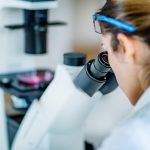Can you reduce the increasing number of patients suffering from allergic diseases?
The short answer is: “Yes”. The recipe behind is excellent translational research, where strong collaborations between researchers at universities and clinicians at hospitals create the foundation for new insights, innovation, and implementation in clinical practice with direct value and impact on patient care.
Professor and CAG Chair, Jeanne Duus Johansen and Professor and CAG Vice-Chair, Charlotte Menné Bonefeld started CAG ALLERGY in 2017. CAG Allergy aim to reduce the increasing number of patients suffering from allergic diseases including eczema, asthma, and rhinitis as well as food and drug allergy.
“CAG ALLERGY’s strength lies in translating research into actual benefits, from improved diagnostics to personalized treatments. CAG ALLERGY is also committed to educating the next generation of researchers and clinicians, ensuring they are equipped to address challenges in allergy and immunology.” CAG Chair, Jeanne Duus Johansen.
The overall goal of CAG ALLERGY is to create new insight for prevention, early diagnosis, improved prognosis, new individualized treatments, and innovation in organization of health care for allergic patients.
“Being part of CAG Allergy has been a rewarding experience, allowing an interdisciplinary approach to tackle allergic diseases by connecting clinicians with basic researchers, immunologists and engineers. This collaboration leads to better care, diagnosis, and treatment for patients with allergic diseases.” CAG Chair, Jeanne Duus Johansen.
The importance of excellent research and strong collaboration
CAG ALLERGY are looking into research that will expand on immediate type allergy, anaphylaxis and allergy to food and drugs, as part of a new clinical professorship (Professor Lene Heise Garvey) at UCPH/RegionH, making use of unique clinical databases, biobank, and state of the art in-vitro testing at the Laboratory for Medical Allergology, Gentofte Hospital in RegionH.
The collaboration with Region Zealand adds opportunities of epidemiologic studies based on blood donors and genetic and phenotypic profiling. Another aim is to exploit and expand data in the biobank, Bioskin, to answer key questions about prognosis and effect of treatments in different subsets of patients. 3000 patients will be included and followed closely, biological samples taken repeatedly over time, integrating new technologies, methods, and data/omics approaches at University of Copenhagen (UCPH). Experts at DTU will develop new methods for micro sampling of skin and microsensors for diagnostics and monitoring of allergy. At the Department of Immunology and Microbiology with LEO Fundation Skin Immunology Research Center (SIC/ISIM) at UCPH researchers will expand their studies on skin immunity, bringing specific expertise in B cells, dendritic cells and complementing already existing competences in T cell biology.
The many different clinical partners represent patients with different allergies, ages and symptoms, which in conjunction with the immunological and engineering expertise creates an excellent and competitive research environment. Previous research performed by CAG ALLERGY has shown a need to improve care pathways. Therefore, models of care for children with atopic disease is developed further by involving health care professionals and patients in a codesign process, followed by testing in both Regions.
Implementation in clinical practice – how does it work?
All research performed by CAG ALLERGY aim to have a point of departure in a clinical problem and an unmet need in the clinic. This ensures a high degree of relevance, and that implementation of results is an integrated part of the research. To further strenghten these aspects CAG ALLERGY have created a patient panel were results are discussed (Bioskin). Examples of implementation of CAG ALLERGY research are:
- A new method for investigating penicillin allergy has been developed and implemented, leading to more patients getting allergy labels removed with use of fewer resources, benefitting patients directly and reducing the risk of antimicrobial resistance.
- Limit values for safe use of frequent allergens in products have been determined in allergic patients and implemented in EU regulations. This has reduced the number of patients seen with these allergies in the clinic.
- Clinical phase 2-3 trials of new drugs for atopic eczema and hand eczema have been performed, expected to significantly improve the treatment response and prognosis of eczema.
- A systematic test protocol for rapid assessment of patients suspected of allergic reactions to the mRNA vaccine excipient polyethylene glycol (PEG) was implemented during the COVID-19 pandemic contributing to a high uptake of the vaccine in this population.
The CAG ALLERGY Team
CAG ALLERGY consist of CAG Chair, Professor Jeanne Duus Johansen, Herlev and Gentofte Hospital and CAG Vice-Chair, Professor Charlotte Menné Bonefeld, University of Copenhagen.
Two junior chairs, PhD, Post Doc Anders Boutrup Funch, Univeristy of Copenagen and PhD, specialist in dermatology Jakob Ferløv Baselius Schwensen, Herlev and Gentofte Hospital.
Alongside 15 CAG Keymembers from across the Capital Region of Denmark, Region Zealand, University of Copenhagen and DTU.








